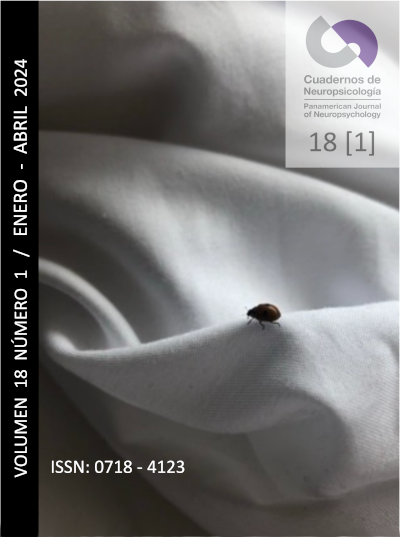Instrumento breve para evaluar comprensión de textos (ibect) en niños de cuarto y quinto año de escolaridad primaria
Abstract
RESUMEN
Los niveles de desempeño en comprensión de textos se han visto significativamente disminuidos en los últimos años, convirtiéndose en un tema de creciente preocupación en Iberoamérica y el mundo. Para poder realizar intervenciones, el primer paso es contar con herramientas apropiadas de evaluación. En el presente artículo se presenta el desarrollo de un Screening para evaluar la comprensión de textos en niños de 4to y 5to año de escolaridad primaria llamado “Instrumento Breve para Evaluar Comprensión de Textos (IBECT)”. El mismo consta de dos textos, uno narrativo y otro expositivo que incluyen 12 preguntas con cuatro opciones de respuesta, de las cuales una es correcta y las otras tres son distractores con distinto grado de proximidad semántica respecto de la respuesta correcta. Para la validación del instrumento se trabajó con una muestra de 75 niños de instituciones con diversos niveles de oportunidades educativas mientras que para la confección de los puntajes normativos se contó con una muestra de 550 niños. El screening demostró tener una adecuada validez de constructo a la vez que se desarrollaron puntajes validados normativos, percentiles y cuartiles para la interpretación de los resultados del instrumento.
Palabras claves: Comprensión De Textos, Evaluación, Screening, Escuela Primaria.
ABSTRACT
Text comprehension have been significantly modified in recent years, becoming an issue of growing concern in Latin America and the world. To carry out interventions, the first step is to have appropriate evaluation tools. In this article, a Screening is developed to evaluate the comprehension of texts in children of 4th and 5th year of primary school called "Brief instrument to evaluate text comprehension (IBECT)". The evaluation consists of two texts, one narrative and one expository, these texts include 12 questions with four response options, of which one is correct and the other three are distractors with different degrees of semantic proximity to the correct answer. For the validation of the instrument, we worked with a sample of 75 children from institutions with different levels of educational opportunities, while for the preparation of the scales, a sample of 550 children was used. The screening proved to have adequate construct validity while normative validated scores, percentiles and quartiles were developed for the interpretation of the results of the instrument.
Keywords: Text comprehension- Evaluation, Screening, Primary School.
RESUMO
Os níveis de desempenho na compreensão de textos diminuíram significativamente nos últimos anos, tornando-se uma preocupação crescente na América Latina e no mundo. Para realizar intervenções, o primeiro passo é ter ferramentas de avaliação adequadas. Este artigo apresenta o desenvolvimento de uma Triagem para avaliar a compreensão de textos em crianças do 4º e 5º ano do ensino fundamental denominada "Instrumento Breve para Avaliação da Compreensão de Textos (IBECT)". É composto por dois textos, um narrativo e outro expositivo, que incluem 12 questões com quatro opções de resposta, sendo uma correta e as outras três distrativas com diferentes graus de proximidade semântica da resposta correta. Para a validação do instrumento, trabalhamos com uma amostra de 75 crianças de instituições com diferentes níveis de oportunidades educacionais, enquanto para a elaboração dos escores normativos, uma amostra de 550 crianças foi utilizada. A triagem demonstrou validade de construto adequada, enquanto escores normativos, percentis e quartis validados foram desenvolvidos para a interpretação dos resultados do instrumento.
Palavras-chave: Compreensão de Texto, Avaliação, Triagem, Ensino Fundamental.
Downloads
How to Cite
Issue
Section
License
Articles published in this journal are protected under the Creative Commons Attribution-NonCommercial-ShareAlike 4.0 International (CC BY-NC-SA 4.0) license. This means that authors retain full rights over their research and publications at all times. As a journal, we fully respect and promote the principles of open access established by this license, allowing the work to be shared, adapted, and distributed for non-commercial purposes, provided that appropriate credit is given to the authors and any derivative works are licensed under the same terms.
Authors are responsible for obtaining the required permission when they wish to reproduce part of the material (figures, etc.) from other publications.
Likewise, CNPs allows authors to host in their personal sites or other repositories that they deem convenient the Final and Definitive Version of the published article with the format assigned by the journal. In no case do we allow access to preprints of the article under evaluation or already published.
When submitting an article to CNPs you are aware that all the contents of CNPs are under a Creative Commons License. In which it is allowed to copy and share the contents freely, always making reference to the origin of the publication and its author.





